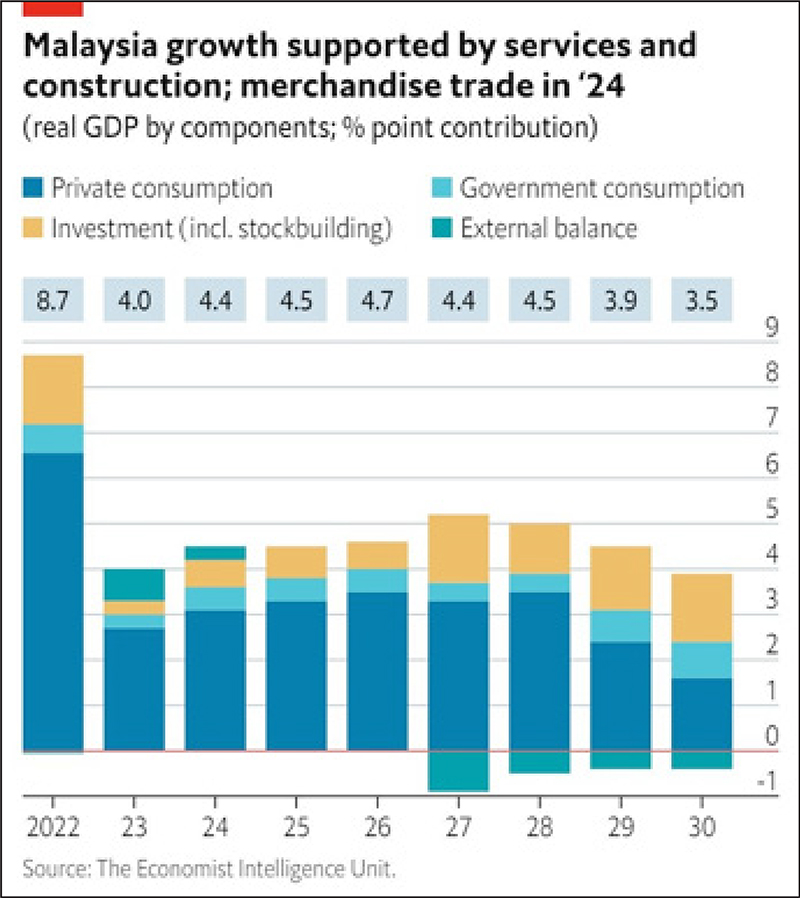Navigating ASEAN’s Digital Decade
In an exclusive interview with Digital Pulse, Sumana Rajarethnam, Director at the Economist Intelligence Corporate Network, Southeast Asia, sheds light on the pivotal factors driving global growth, Malaysia's strategic position in the digital economy, and the overarching theme of encouraging international investors to participate in the evolution of ASEAN's digital landscape actively

What is driving global growth?
Forecast growth of 2.2% in 2024 will be slower than the estimated 2.5% expansion this year, with still-firm growth in Asia and a recovery in Europe partially offsetting a slowdown in the US. Moderate stimulus will stabilise China's economy. Easing inflation in response to more helpful supply conditions will persuade most major central banks to hold off on further policy rate increases, although rate reductions are forecast to appear in the second half of 2024.
What is the outlook for the United States?
EIU expects US real GDP growth to slow to less than 1% in 2024 as the sharp rise in interest rates and still-high inflation start to weigh on consumer spending. This would still be a soft landing for the US economy, thanks to resilient consumer demand and a wave of public investment directed toward infrastructure and industry.
The Inflation Reduction Act (IRA) has already bolstered 116 projects, injecting a substantial US$76 billion into the economy. Moreover, a staggering figure of US$391 billion is on the horizon, indicating that this ambitious target could be surpassed.
Further, the competitive landscape triggered by "Buy American" requirements is sparking a subsidy race on the global stage.
What has changed in China?
In the intricate tapestry of China's economic landscape, key indicators have taken unexpected turns, shaping a narrative that demands attention. Foreign Direct Investment (FDI) and Foreign Portfolio Investment (FPI) are on a swifter decline than anticipated, signalling challenges on the economic front. While the services sector stands resilient, manufacturing grapples with COVID-induced cyclical weaknesses.
EIU estimates that China's economy will expand by 5.5% in real terms in 2023, beating the official target of 5%, buoyed by robust consumer spending and expanded fiscal spending late in the year. The growth figure, high by international comparison, nonetheless belies some thorny economic issues, including continued stress in the property sector and a debt overhang facing local governments. Efforts to resolve these risks will prevent a systemic financial crisis, but the resulting deleveraging and retrenchment will hinder growth in the coming years. Thus, we forecast that real GDP growth will reach 4.9% in 2024 and decelerate further.


Let’s talk about Malaysia - what lies ahead?
A snapshot of Malaysia's economic landscape reveals a projected acceleration in real GDP growth to 4.4% in 2024, propelled by the resurgence of demand in crucial export markets like China and the US. Factors contributing to this growth include diminishing inflation, implementing monetary easing, and fostering an environment conducive to increased private consumption and investment.
Emphasising the nation's resilience, domestic demand takes centre stage as the primary driver for growth, a pivotal role considering the tepid nature of external demand. The monetary stance is set to remain neutral until 2024, marking the conclusion of the Bank Negara Malaysia's (BNM) tightening cycle.
However, the economic outlook has cautionary notes. Lingering risks, including potential inflationary pressures from rising food prices and a weakened ringgit, suggest that a prompt return to easing measures might be on a different horizon.
The 12th Malaysia Plan (12MP) outlines clear objectives, yet its aspirations are ambitious. The target of achieving an annual growth rate of 5 - 5.5% from 2023 to 2025, as set by the Medium-Term Review (MTR), is ambitious, particularly considering the challenges posed by external conditions.
Institutional reforms and the effective implementation of fiscal consolidation are critical to the plan's success. These factors serve as key enablers, paving the way for the initiation of small-scale projects that can be piloted for broader economic impact.




